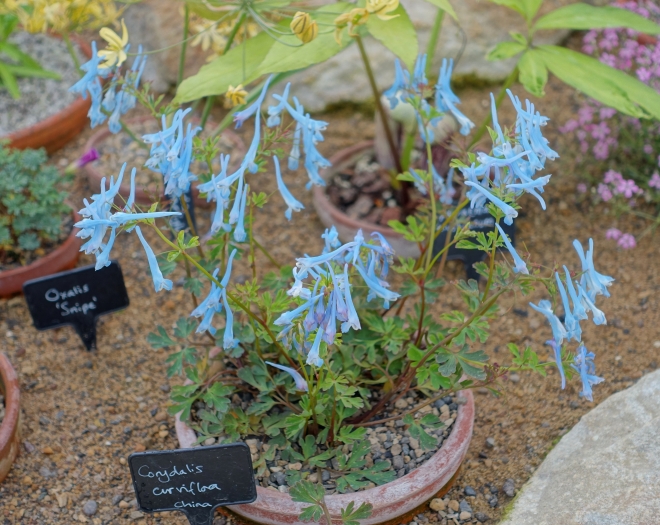Blue Heron
(Corydalis curviflora)
Blue Heron (Corydalis curviflora)
/
/

Daderot
CC0
Image By:
Daderot
Recorded By:
Copyright:
CC0
Copyright Notice:
Photo by: Daderot | License Type: CC0 | License URL: https://creativecommons.org/licenses/by-sa/3.0 | Uploader: Daderot | Publisher: Wikimedia Commons |

Estimated Native Range
Summary
Corydalis curviflora, commonly known as Blue Heron, is a deciduous perennial herb native to forest margins and slopes in Northern and Central China. It typically grows to a height of 0.7-0.8 feet (0.2-0.2 meters) and a width of 0.3-0.4 feet (0.09-0.1 meters). The plant features delicate, fern-like foliage and produces striking, tubular blue flowers in the spring and summer, which are quite showy and attract pollinators.
Blue Heron is valued for its vibrant blue flowers and its ability to thrive in shady garden spots, making it an excellent choice for woodland gardens, shaded borders, and rock gardens. It is relatively easy to maintain, requiring consistent moisture without waterlogging. Gardeners often use it to create a carpet of color in partially shaded areas. While it prefers well-drained, fertile soil, it can adapt to a range of soil conditions as long as adequate drainage is provided. It is not known for serious pest or disease problems, but slugs and snails can sometimes be an issue. Additionally, while not invasive, Corydalis can self-seed under optimal conditions.CC BY-SA 4.0
Blue Heron is valued for its vibrant blue flowers and its ability to thrive in shady garden spots, making it an excellent choice for woodland gardens, shaded borders, and rock gardens. It is relatively easy to maintain, requiring consistent moisture without waterlogging. Gardeners often use it to create a carpet of color in partially shaded areas. While it prefers well-drained, fertile soil, it can adapt to a range of soil conditions as long as adequate drainage is provided. It is not known for serious pest or disease problems, but slugs and snails can sometimes be an issue. Additionally, while not invasive, Corydalis can self-seed under optimal conditions.CC BY-SA 4.0
Plant Description
- Plant Type: Herb
- Height: 0.7-0.8 feet
- Width: 0.3-0.4 feet
- Growth Rate: Moderate
- Flower Color: Blue
- Flowering Season: Spring, Summer
- Leaf Retention: Deciduous
Growth Requirements
- Sun: Part Shade
- Water: Medium
- Drainage: Medium
Common Uses
Bird Garden, Butterfly Garden, Deer Resistant, Fragrant, Hummingbird Garden, Low Maintenance, Rabbit Resistant, Rock Garden, Showy Flowers
Natural Habitat
Native to forest margins and slopes in Northern and Central China
Other Names
Common Names:
Scientific Names: , Corydalis curviflora,
GBIF Accepted Name: Corydalis curviflora Maxim.